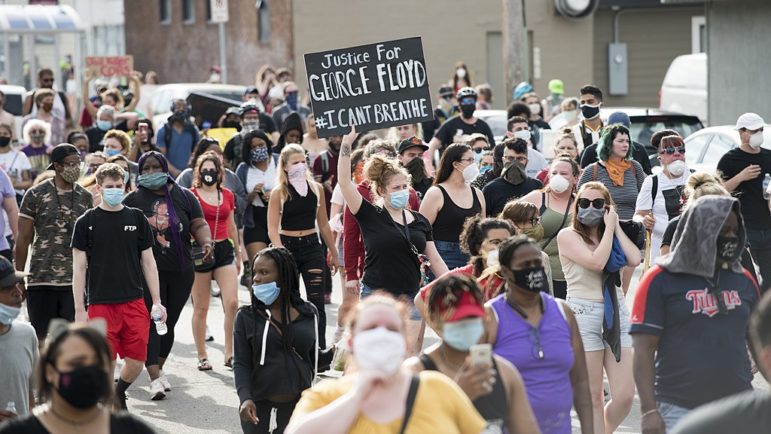
Minnesota is on the international stage right now, and the world is seeing the racism that has been experienced by many Minnesotans but has been ignored and unseen by white people for too long. This moment is a reckoning for all Minnesotans, and we must decide to make the deep and fundamental change that our reality demands. This is an opportune time to look deeply at the assumptions white Minnesota leaders have about the state we are most often proud to call home.
The trial of Derek Chauvin has been a time of trauma, made more traumatic by the killing of Daunte Wright and the militarized response on our city streets and violence against protesters and journalists covering the protests giving voice to justified rage and grief.
Many white Minnesotans expressed shock at the senseless killing of Daunte Wright, but as people of color in our community have rightfully named, the 2016 senseless killing of Philando Castille during a routine traffic stop and the 2020 killing of George Floyd were not rare events but were in fact indicative of larger systems of violence and oppression toward people of color in our state. University of Minnesota thinkers like Will Stancil of the Law School (writing here on Saturday in the Atlantic) or Samuel L. Meyers of the Hubert H. Humphrey School of Public Affairs (writing here on Sunday in the New York Times) show unequivocally that Minnesota is one of the best places to live in America, but only if you’re white like me.
Decades of disinvestment have left communities like Brooklyn Center with significant disparities in wealth, wages, home ownership, school test scores, transportation access, and clean air. Thirty years ago, when I led the weatherization assistance program that served Brooklyn Center, the Minneapolis suburb was 90 percent white with five percent of the people living below the poverty line; today Brooklyn Center is 38 percent white and its poverty rate is triple what it was, now 15 percent.
It has to be confronted that these conditions arise from structural racism and white supremacy. The over-policing of Black communities is also the result of structural racism, conditions that exist because white people designed our institutions to benefit the status quo while actively harming communities of color. Many of these structures are in the form of policies that we can and must change.
Beyond the structural disparities in our state, we are facing an unprecedented suppression of media working to tell the story of what is happening in our communities and create transparency and accountability. We don’t want Minnesota to be the place where police beat and detain journalists, as documented in a letter by 26 of the nation’s most influential news organizations on Saturday. We also don’t want Minnesota to be a place where police commit violence against protesters, nor do we want the challenge of recovery set back by more widespread destruction and arson, caused by individuals exploiting the trauma of this moment.
Organizations like Fresh Energy that are committed to change through public policy must recognize our collective responsibility to create equitable conditions for all—access to opportunity, equal protection from violence, and full participation in the creation of wealth—with historically marginalized people fully engaged in places of power. It is criminal when policies benefit the few, when instead we need policy change that benefits all, with a special focus on reversing the disparities and violence so objectively and painfully clear.
As a leader of a Minnesota institution that is striving for a more just and resilient world, I have to be clear where I stand. The events of this past year, and the events of last week and this week, blare the news to the world that we are a long, long way from the society that we aspire to. It’s not enough to have a mission statement that “centers equity,” we have to engage in difficult conversations, and fight to dismantle racist systems to build a Minnesota that works not just for some but for all.

